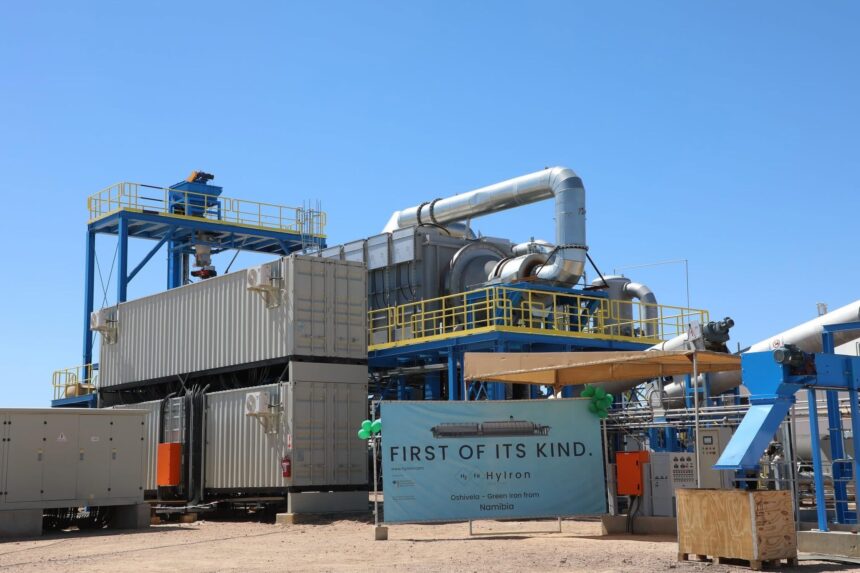Namibia has taken a step towards the future of sustainable industrial production with the inauguration of the HyIron Oshivela plant on Friday.
The plant produces Direct Reduced Iron (DRI), and is the first of its kind in Africa to operate using Green Hydrogen, thus positioning Namibia at the forefront of a global push to decarbonise industrial production. The resulting DRI is then used as a raw material in steel
production.
The facility symbolises a major shift in how the country adds value to its natural resources, and was constructed in just 11 months. Steelmaking remains one of the largest industrial sources of carbon emissions, and with green hydrogen replacing traditional fossil fuels used in the iron-reduction process, the new facility aims to be part of the solution.
At this weekend’s inauguration of the plant, Green Hydrogen Commissioner James Mnyupe stated that the plant is powered by renewable energy, with a 25-megawatt solar array supplying electricity. That power is stored in a 13-megawatt battery system, helping to ensure a steady and reliable energy supply for the plant’s processes including 12 megawatts worth of alkaline electrolyzers that produce the hydrogen fuel used in the reduction process.
“This hydrogen is stored in tanks and then pumped through a kiln developed by, one of our strategic equity partners. It is in this kiln that iron ore is transformed into briquettes of Direct Reduced Iron, which will be exported around the world,” said Mnyupe. The project, beyond its technical achievements, has been hailed as a model of inclusive industrial development. More than 400 Namibians were employed during the construction phase, with more than 16 local SMEs contributing to various aspects of the project from logistics to welding and equipment supply.
Once in full operation, the plant is expected to sustain at least 50 permanent jobs, with ripple-effects extending into public and private sectors alike. Transportation of the DRI will involve TransNamib, while Namport is expected to handle increased export volumes, creating further employment and economic activity.
Financially, the value-add is substantial. Mnyupe said, the raw materials purchased at around US$40 to US$50 per tonne are converted into DRI and sold for over US$300 per tonne. This is a six-to-eight-fold increase that directly strengthens Namibia’s foreign exchange reserves.
“This is a game-changer. It shows what’s possible when we invest in value-addition and green industrialisation. And this is only the beginning,” he said.
He added that, plans for the next phase are already underway, with the aim to scale up the plant’s capacity tenfold. This expansion will include the addition of more kilns and a 250-megawatt solar farm, paving the way for further job-creation and economic growth.


